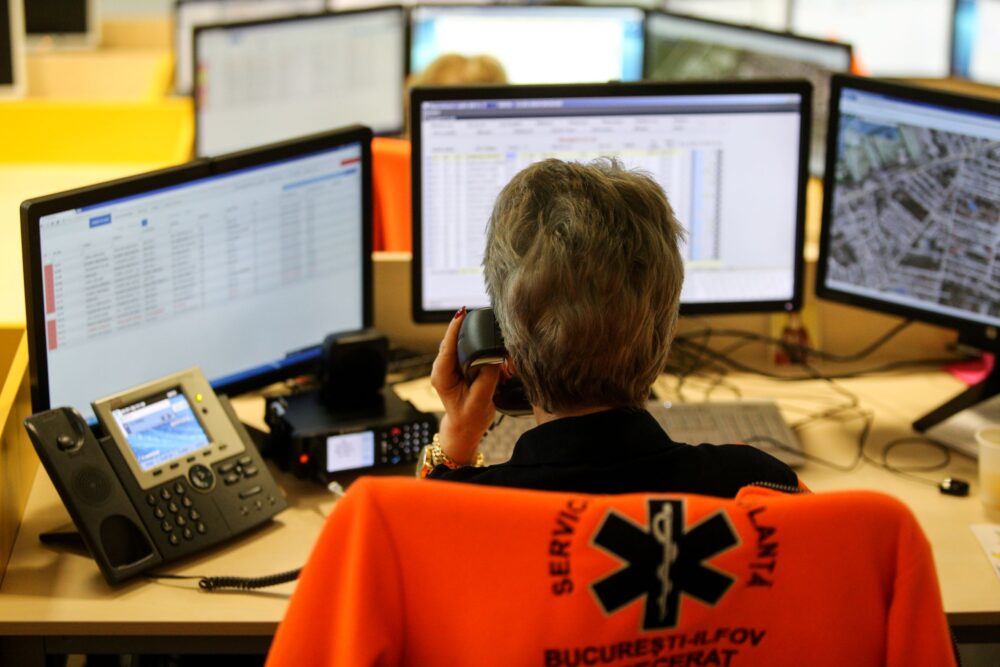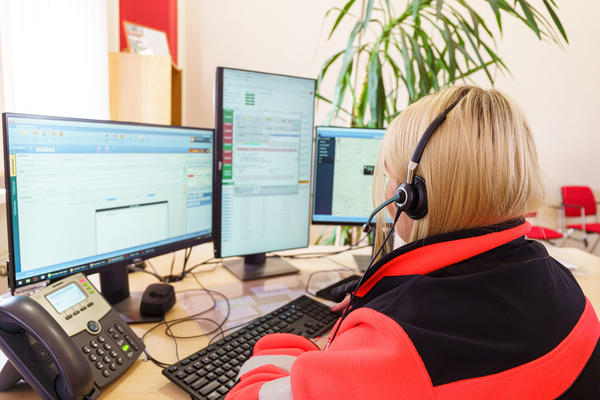
Strengthening Alternative 911 Emergency Response
As established alternative emergency response programs respond to thousands of emergency calls — providing care and needed services to people in crisis, reducing overreliance on law enforcement, and decreasing strain on first responders — an increasing number of jurisdictions are starting to explore and test similar programs.
Since 2021, the GPL has provided intensive implementation support to 23 alternative emergency response programs representing 35 unique jurisdictions through our Alternative 911 Emergency Response Implementation Cohort. Collectively, they have responded to more than 65,000 calls, including those related to mental and behavioral health, trespassing, domestic violence, welfare checks, and drug use.
GPL Assistant Director Gabriela Solis Torres recently joined a panel with staff from Tradeoffs, The Marshall Project, and the City of Durham to discuss the national landscape of alternative emergency response programs. The event also included takeaways from a new podcast series called “The Fifth Branch,” which draws on insights from Solis Torres and takes a deep dive into the Holistic Empathetic Assistance Response Teams (HEART) program in Durham, N.C., which the GPL supported from 2021 to 2023. The HEART program diverts emergency calls to a wide range of alternative responses, including a clinician embedded within the 911 call center, an in-person, unarmed team of specialists, and a co-response team that includes both a clinician and a police officer. Listen to the podcast here.
During the panel, Solis Torres elevated trends she has seen through the GPL’s work across numerous alternative emergency response programs, including:
1. Many programs are hiring individuals with specific behavioral health expertise and providing them with intensive on-the-job training to ensure they can safely respond to calls. Programs often recruit applicants with professional experience in de-escalating crises, such as social workers or paramedics, as well as those with lived experience of mental health conditions, often referred to as “peer navigators.” Programs often then invest in staff by offering on-the-job training to prepare them to safely respond to calls. Training typically lasts from two to six months and includes time in both the classroom and the field.
“The training these responders receive is very different from the usual training provided to traditional emergency responders,” said Solis Torres, noting that training often includes topics like trauma-informed care and service referrals. This intensive training is crucial to ensuring responders are prepared to quickly assess emergency situations for safety, de-escalate the crisis at hand, and successfully connect people to needed services, such as shelter.
2. Many programs are working to cultivate early and ongoing support from other emergency response stakeholders. Building support among emergency response stakeholders is crucial for the effectiveness of programs in handling calls and collaborating with other emergency responders in the field, such as firefighters, police officers, and paramedics. For instance, 911 dispatchers and their supervisors decide which type of emergency response is needed for each call, making their role essential in the alternative emergency response dispatch process.
However, support among these stakeholders can vary. In some cases, they may have concerns about duplication of efforts and the safety of unarmed responders. On the other hand, emergency response stakeholders may view alternative response teams as providing a needed set of skills and resources that can better meet the needs of people experiencing a crisis.
According to Solis Torres, program leaders are not treating building buy-in as a one-time event. Instead, they are making the case about the importance of alternative emergency response services to these stakeholders on an ongoing basis.
“It’s much easier to get buy-in when you pitch a small pilot that affects one police station. Now, we’re starting to see programs scale and add hours or units or respond to larger portions of the city, and then the buy in becomes a larger lift,” said Solis Torres.
3. Many programs are expanding eligibility for alternative response teams beyond mental health calls. 911 call takers assign a code to each 911 call based on the situation at hand, such as “dispute” or “public intoxication,” which determines the dispatched emergency service, such as fire, police, or EMS. When alternative emergency response programs are established, they must determine which 911 call codes are safe and suitablefor their unarmed teams to respond to. Often, programs start with a narrow set of call codes related to mental and behavioral health, such as “mental health crisis” or “attempted suicide.”
However, “when people call 911, they’re usually not saying ‘Hello, I’m having a mental health emergency.’ The things they say on the call might not clearly come through as a mental health emergency,” said Solis Torres.
To address this, some programs are expanding their response to include a more holistic set of call codes beyond mental health emergencies, such as those related to trespassing or domestic violence. Expanding call code eligibility can help ensure that alternative emergency response teams are dispatched to all calls that are well-suited for responders’ behavioral health expertise, ensuring more people receive the help they need.
The GPL’s Alternative Emergency Response Initiative is drawing on implementation learnings from its first three Cohorts to identify how to best scale these programs nationally. To learn more about the GPL’s work on Alternative 911 Emergency Response, visit our webpage and subscribe to our newsletter.
For governments exploring, planning, implementing, or expanding alternative 911 emergency response teams, sign up for the GPL’s Alternative 911 Emergency Response Community of Practice. This monthly learning series is free and open to all government staff undertaking projects related to alternative response, and currently includes more than 340 members representing more than 100 jurisdictions.
Strengthening Alternative 911 Emergency Response
Strengthening Alternative 911 Emergency Response
Strengthening Alternative 911 Emergency Response
Strengthening Alternative 911 Emergency Response
Strengthening Alternative 911 Emergency Response
Strengthening Alternative 911 Emergency Response


